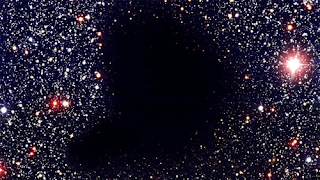What's Happening to the Night Sky?
The night sky, traditionally viewed as constant and unchanging, has always served as a reliable guide for navigators and stargazers alike. But recent observations indicate a puzzling anomaly - certain stars seem to be vanishing without a trace.
Scientists, led by the Vanishing and Appearing Sources during a Century of Observations (VASCO) Project, have embarked on a mission to challenge the conventional belief of celestial permanence. By comparing images of the night sky taken over several decades, they aim to identify stars that have seemingly disappeared.
The VASCO Project: Peering into the Abyss
The VASCO project, a joint venture between researchers from the Nordic Institute for Theoretical Physics and other institutions, compares contemporary images of the night sky with those captured in the mid-20th century. They've identified at least 100 sources of light that, while visible in previous decades, appear to have vanished in modern-day observations.
The disappeared light sources could signify short-lived flashes of brilliance or, more tantalizingly, the complete disappearance of a celestial body. While preliminary findings suggest these vanishings are likely the result of natural events, the researchers remain hopeful that their work will contribute to our understanding of astronomy, and perhaps even the search for extraterrestrial intelligence.
Betelgeuse: A Case Study in Stellar Disappearance
![]()
One particularly notable example of a vanishing star is Betelgeuse, a supergiant star in the Orion constellation. Over recent years, Betelgeuse has dimmed considerably, shrinking to just 50% of its original brightness. This unusual behavior has sparked concern among astronomers, leading to speculation as to whether this star is on the brink of extinction.
Theories Behind the Vanishing Stars
Several potential explanations have been proposed for these vanishing celestial bodies. One possibility is that these stars have actually exploded in a supernova, leaving their cores to collapse into a black hole. This process, known as a "failed supernova", could result in the total disappearance of the star from the night sky.
Another intriguing theory posits that the vanishing stars could be occluded by extraterrestrial technology, such as a Dyson sphere, which would completely encase a star, effectively making it invisible from Earth.
The Search Continues
The VASCO project continues to scrutinize the 5399 candidates for vanishing stars, utilizing a variety of sources, including the Spanish Virtual Observatory and the Mt. Palomar Observatory's photographic images from the 1950s. These images, taken before the launch of Sputnik, are free from the interference of satellite glints and offer a unique opportunity to investigate this cosmic mystery.
The Role of Citizen Science
While the work of professional astronomers is invaluable, the contribution of citizen scientists cannot be underestimated. The VASCO project actively encourages public participation, with thousands of volunteers helping to visually inspect potential vanishing star candidates. This collaborative effort is a testament to the power of collective curiosity and a shared passion for unraveling the mysteries of the cosmos.
Interpreting the Data
While the phenomenon of vanishing stars is undoubtedly intriguing, it's important to interpret the data cautiously. As Beatriz Villarroel, a researcher at the Nordic Institute for Theoretical Physics and coauthor of the VASCO project, stresses, "You would have to exclude all-natural things, and then there might also be new natural phenomena that we don’t know about.”
The VASCO project continues to investigate the remaining unidentified transients, with hundreds more potentially awaiting discovery. With the launch of the Large Synoptic Survey Telescope in late 2022, the hunt for these elusive celestial objects is set to accelerate.
Conclusion
The mystery of the vanishing stars is a captivating chapter in our ongoing exploration of the cosmos. As we continue to gaze upon the night sky, we're reminded of the countless secrets it holds, and the potential discoveries that could reshape our understanding of the universe.
So, the next time you find yourself under a starlit sky, take a moment to ponder the enigmatic disappearing stars and the fascinating journey of discovery they represent. As the VASCO project's research underscores, there is always more to learn in our ever-evolving cosmos.
References
- The night sky is changing, and we can’t figure out why
- Discovering vanishing objects in POSS I red images using the Virtual Observatory
- The Vanishing & Appearing Sources during a Century of Observations Project
For more fascinating insights into the mysteries of the cosmos, continue exploring FreeAstroScience, your passport to understanding the world around us. With a clear and engaging language, FreeAstroScience is committed to expanding your knowledge horizons and inspiring a sense of intellectual freedom. All content is passionately crafted by the FreeAstroScience team.


Post a Comment